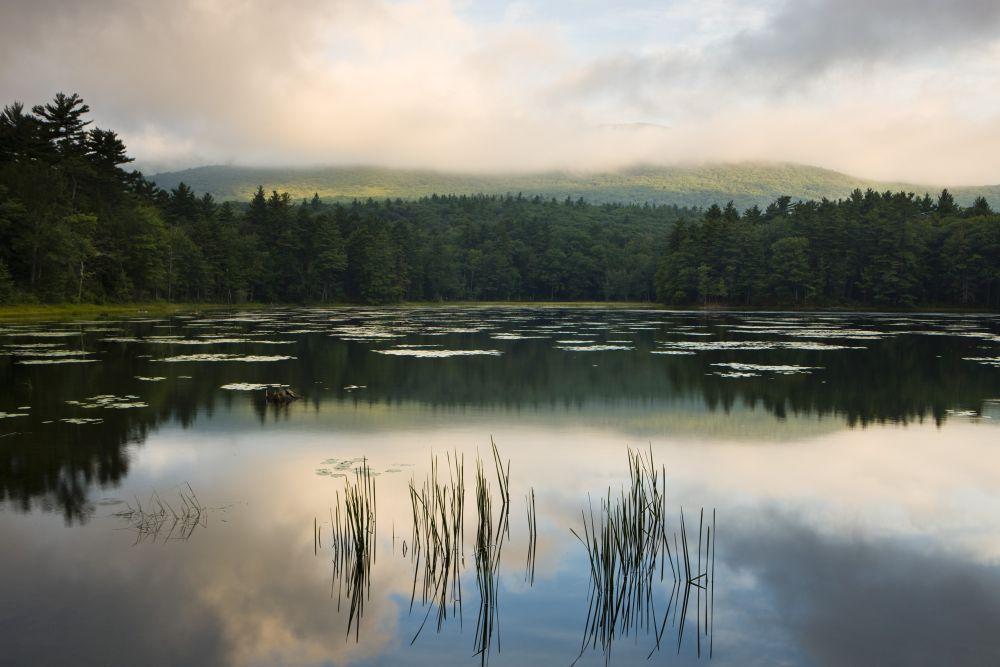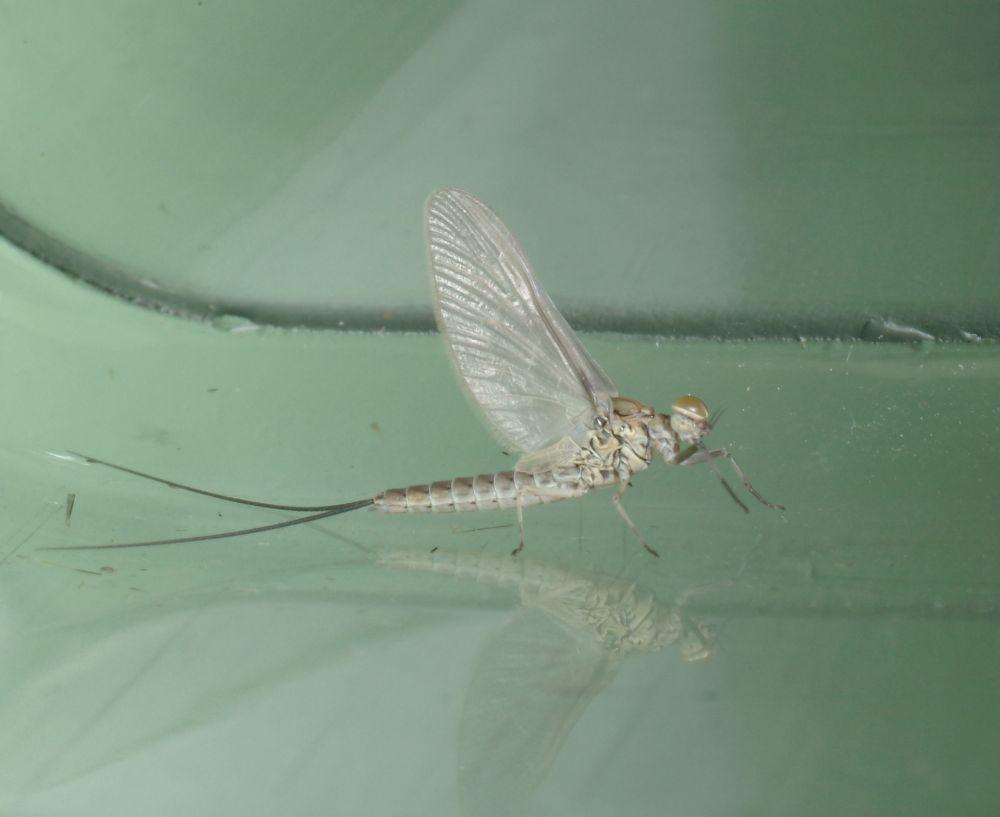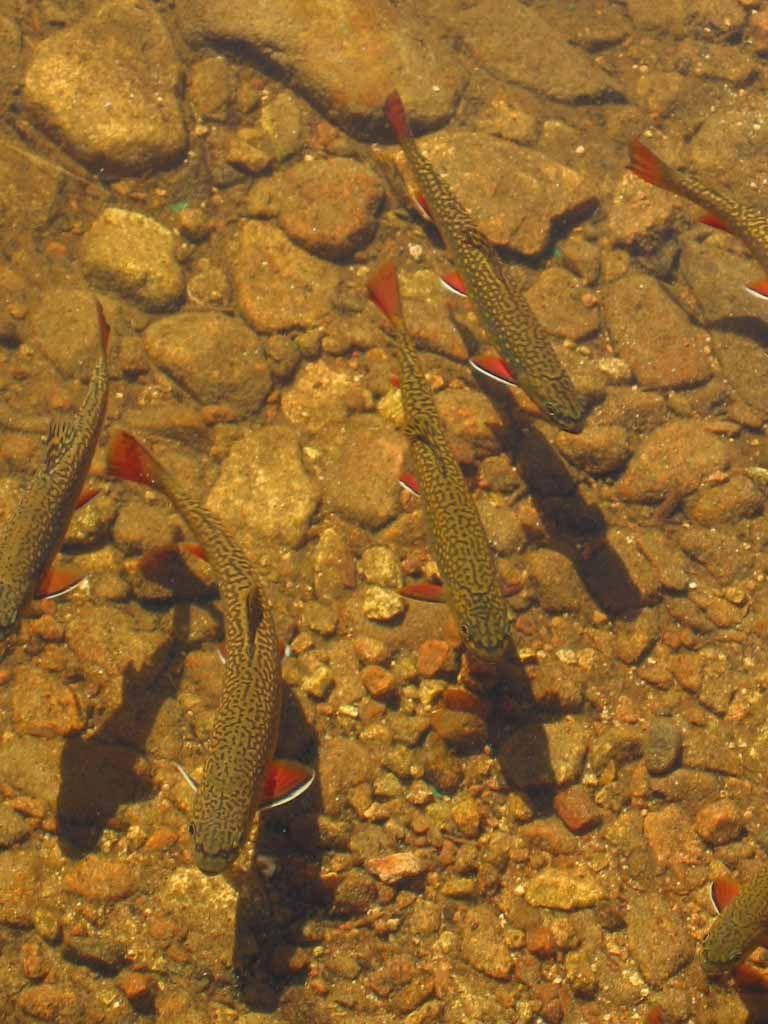- Tags:
- Wildlife

Wetland and Mount Monadnock in May. Photo Jerry Monkman, EcoPhotography
By May, twilight arrives late. From the high and lonesome expanse of Interstate-89, evening alpenglow illuminates a flank of Mount Kearsarge, changing every second from yellow to gold and now pink, like an ember fallen from a fire. Purple shadows climb the lower slopes as the sun sinks beyond Lake Sunapee into the hills of Vermont.
My serpentine commute from Concord to Sutton winds from the Contoocook River’s wide red maple floodplain to parallel the lively Warner River along a state two-lane highway. The route eventually peels off on a small back road along the tiny Lane River, which tumbles from the rounded hills and narrow wet meadow valleys of its womb-like headwaters.
Suddenly, unseen droplets pelt the windshield. Is it raining?
I squint through a spattered windshield into a gauzy curtain ahead; a cloud of newly-hatched mayflies swarms above the river road. A colossal “hatch” of millions of half-inch long, forked-tailed insects is underway. I roll down the windows, stretch out my left arm, and plunge headlong into the swarm. Mayflies speckle the windshield, bounce off my open hand, and collect on my shirt sleeve.
From where did this mayfly hatch emerge?
From the river.

There are only a few dozen species of mayflies in New Hampshire. More species of aquatic insects inhabit the southern states, where mountain streams are less acidic, and calcium-rich bedrock yields a higher pH that supports a greater variety of aquatic insects. Mayflies belong to the order Ephemoptera. Translated from Latin, that means literally “short-lived wing.” Indeed, mayflies have no mouth parts nor time to eat. Their sole purpose is to mate, lay eggs on the water, and die.
Aquatic insect eggs hatch underwater in lakes and streams by mid-summer. Several larval stages, called “instars,” of the various aquatic insect “nymphs” live through summer, autumn, and then overwinter, crawling amid pebbles on the bottom of clear, cold streams and spring-fed ponds. Like the much-maligned and infamous black flies, mayflies require cold, clean oxygen-rich water. They’re excellent indicators of high water quality in freshwater ecosystems. We’re fortunate to live in a region that still supports them.
When water temperatures rise during spring, stream conditions trigger a massive synchronized hatch. The so-called “emergers” float or actively swim to the surface to shed their final larval exoskeleton on rocks or logs along the river banks and pond shores.
Delicate dun mayfly nymphs swim to the water’s surface and crawl out to molt. The exoskeletons split open, allowing adult “spinners” with opaque, test-brand new wings that are not yet fully developed to flutter skyward for their final hours of life. The collective ascension of clear-winged spinners culminates in a brief conspicuous aerial mating swarm: a mayfly hatch. At last, the females lay eggs on the water, and the spent, adult mayflies die less than two days after they first crawled from their liquid birthplace.
Aquatic insect life cycles are best known to anglers, who try to “match the hatch” to fool hungry trout with imitation flies. Bits of bead, feather, and colored wire are wound around hooks to represent various aquatic insect species and specific larval instars. “Wet fly” variations represent the swimming larval nymphs. “Dry flies” represent egg-laying adults and the floating spent spinners. There is a reverence for insects in every angler’s flybox.
But it’s not just anglers who follow the emergence of hatching mayflies. The annual drama attracts appreciative audiences above and below the water’s surface. As they rise, in a final curtain call, from the dark, watery depths up into the wide blue yonder, this last burst of glory is the tolling of the dinner bell for wildlife.
Insect protein in all its incarnations forms the broad base of the food pyramid. All wildlife, from fish, frogs, snakes, and turtles to songbirds, bats, and the largest, fur-bearing mammals, are ultimately dependent in some way on rich and diverse statewide insect populations. Insects are the primary reason why millions of colorful, neo-tropical songbirds hazard the risks of long-distance migration to northern latitudes to breed and raise their young. They’d stay year-round if the insects remained as plentiful as they are in May and June.
In May, the tree swallows – our local troupe of aerial acrobats – wheel, dip, and tumble while hawking insects above an open marsh. Their beaks dimple the glassy water. Their acrobatic synchronized evening feeding ballet is a wonder of movement and light. They rise and fall, alternately showing iridescent green backs and snow-white breasts, like two-toned cottonwood leaves blown out over the Lane River from the surrounding woods.

Unseen beneath the river’s surface, pink-flanked rainbow trout and bejeweled speckled brook trout rise up in a mirror image of tree swallow choreography. Trout sip swimming mayflies just beneath the water’s surface. Concentric rings spread across quiet pools. Occasionally, an audible tail splash breaks the mirrored water when fish snatch nymphs and roll back to the depths. Where tannic water runs clear, you may see a white flash of fins and bellies as trout troll through nymphs rising like champagne bubbles.
New Hampshire’s rivers run high in spring. From the bank, I watch concentric rings spread across the water. Mayflies emerge, struggle, fly, breed, and die. A fluttering horde surrounds me as I hike back to my bug-spattered pickup truck in the last light of day. The biting black flies are thick and hungry; my wrists, neck and ears sting from bites. It’s a small price to pay for the performances I've been so fortunate to just witness!
